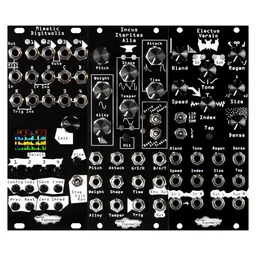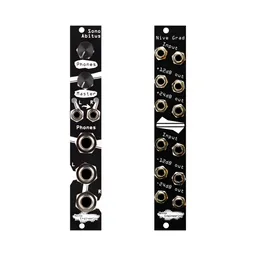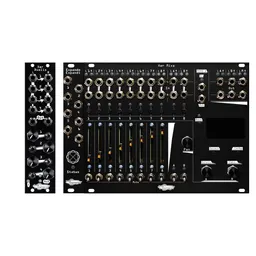A while back, we talked a bit about mixing CV. Combining modulation sources is a great way to make your patches even more dynamic and interesting. This being modular, everything is voltage, and that means that we can apply the same techniques to pitch sequences, too. However, we need a specific utility to do that: enter the precision adder.
What’s a precision adder?
A precision adder is a special type of CV mixer. Standard mixers in Eurorack will generally have some amount of error in their signal path, which won’t be noticeable at all in a modulation context – missing a twentieth of a volt won’t be audible if you’re modulating, say, the decay time of an envelope. However, when we’re dealing with pitch, a twentieth of a volt is extremely noticeable: an error of that value would be nearly a quarter tone off.
Enter the precision adder: precision adders use extremely high quality components in their signal path so that voltages at the inputs are output at almost exactly the same value. This costs a whole lot more (the resistors in our precision adder, Quantus Pax, cost about ten times the price of the standard resistors we used in other modules) but means that multiple pitch sequences can be added or subtracted from each other and still stay in tune.
There are a number of precision adders on the market, the most common being the Doepfer A-185-2. Some sequencers also have external transpose inputs which can be used in similar ways.
Using a precision adder in a patch
One of my personal favorite patches with precision adders is to combine a pitch sequence with an LFO to add vibrato to a voice that doesn’t have FM inputs. You’ll need to attenuate your LFO quite a lot to sound like a violin or guitar’s vibrato, but it’s a wonderful way to make oscillators sound more musical.

Most commonly, precision adders are used to combine multiple pitch sequences together. This is a fun way to expand the possibilities of simple sequencers in particular, and is the backbone of many generative pitch sequencing techniques. Mixing short sequences that have different clock rates or different lengths is a simple way to create a huge variation of melodies.
A simple patch idea would be to combine a 16th note sequence of 16 steps with a whole note sequence that’s 4 steps long. This would create a chord change every measure, extending the length of our sequence with just a few modules. This is one of my favorite techniques, and something I do in many of my patches – I have a Quantus Pax adder with one of the xpose inputs patched to a Vox Digitalis that controls the tuning of the four melodic voices in my system (as well as my kick drum
Throwing simplicity to the wind, here’s a classic example by Steevio showing precision adders in use. A number of precision adders are patched to combine analog sequences, generating long melodic progressions. You can hear the patch at the beginning of the video, and the talk about precision adders starts around 9:27.






